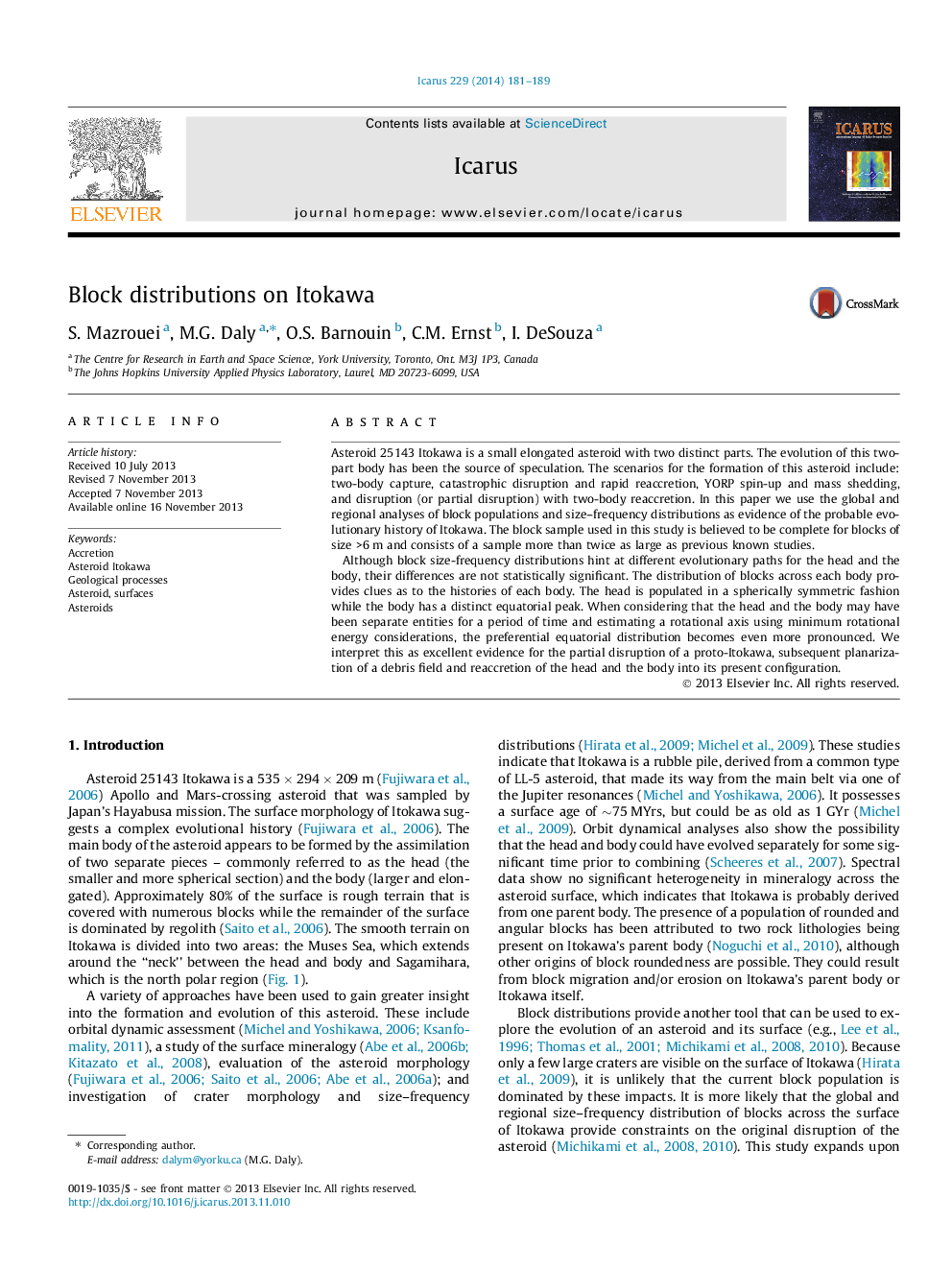| Article ID | Journal | Published Year | Pages | File Type |
|---|---|---|---|---|
| 8138845 | Icarus | 2014 | 9 Pages |
Abstract
Although block size-frequency distributions hint at different evolutionary paths for the head and the body, their differences are not statistically significant. The distribution of blocks across each body provides clues as to the histories of each body. The head is populated in a spherically symmetric fashion while the body has a distinct equatorial peak. When considering that the head and the body may have been separate entities for a period of time and estimating a rotational axis using minimum rotational energy considerations, the preferential equatorial distribution becomes even more pronounced. We interpret this as excellent evidence for the partial disruption of a proto-Itokawa, subsequent planarization of a debris field and reaccretion of the head and the body into its present configuration.
Related Topics
Physical Sciences and Engineering
Earth and Planetary Sciences
Space and Planetary Science
Authors
S. Mazrouei, M.G. Daly, O.S. Barnouin, C.M. Ernst, I. DeSouza,
